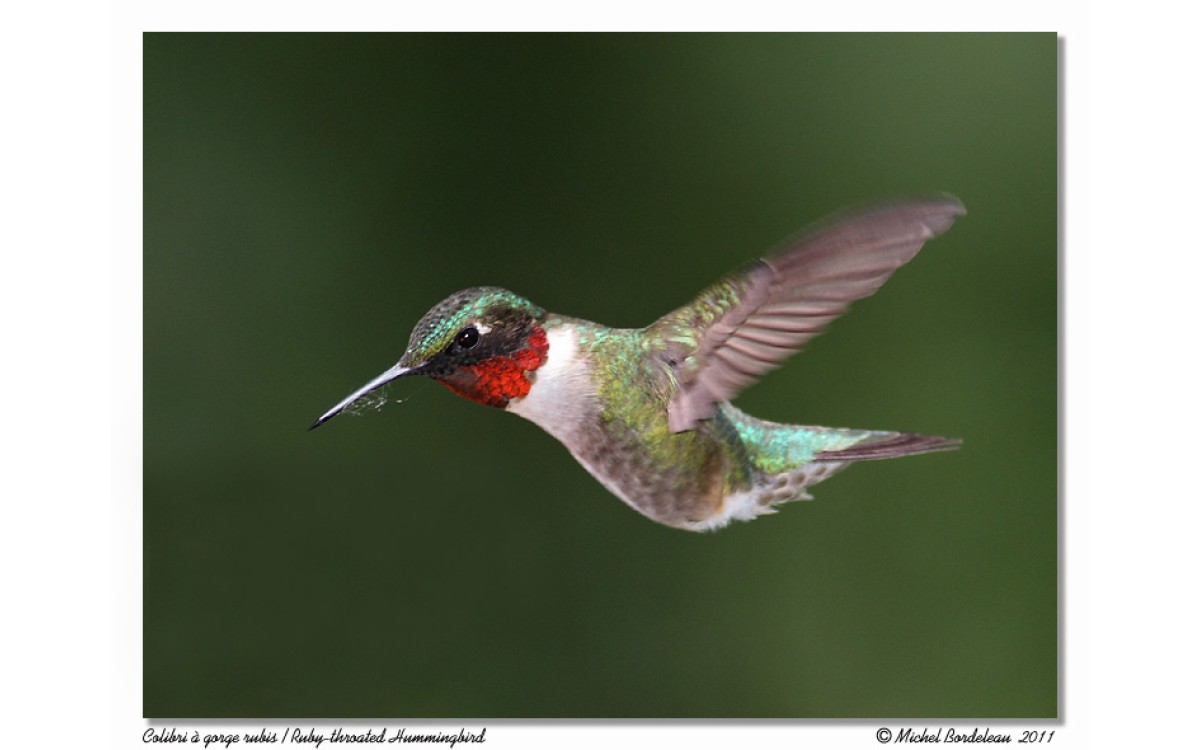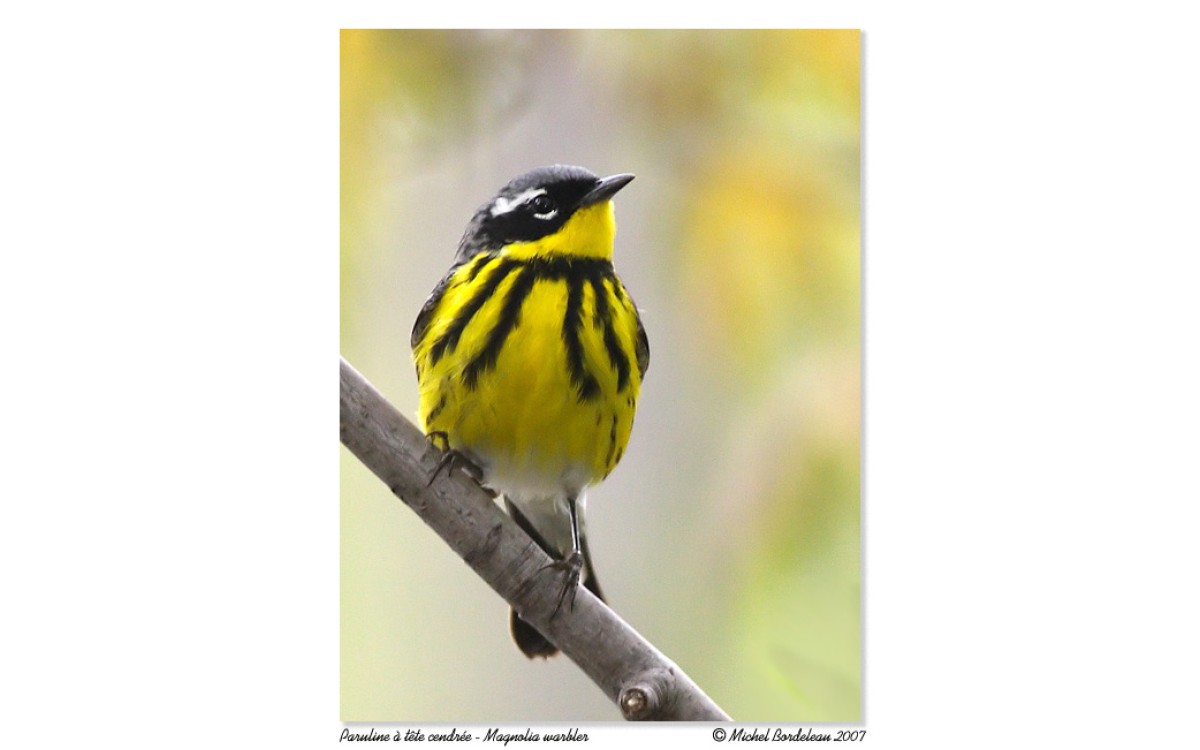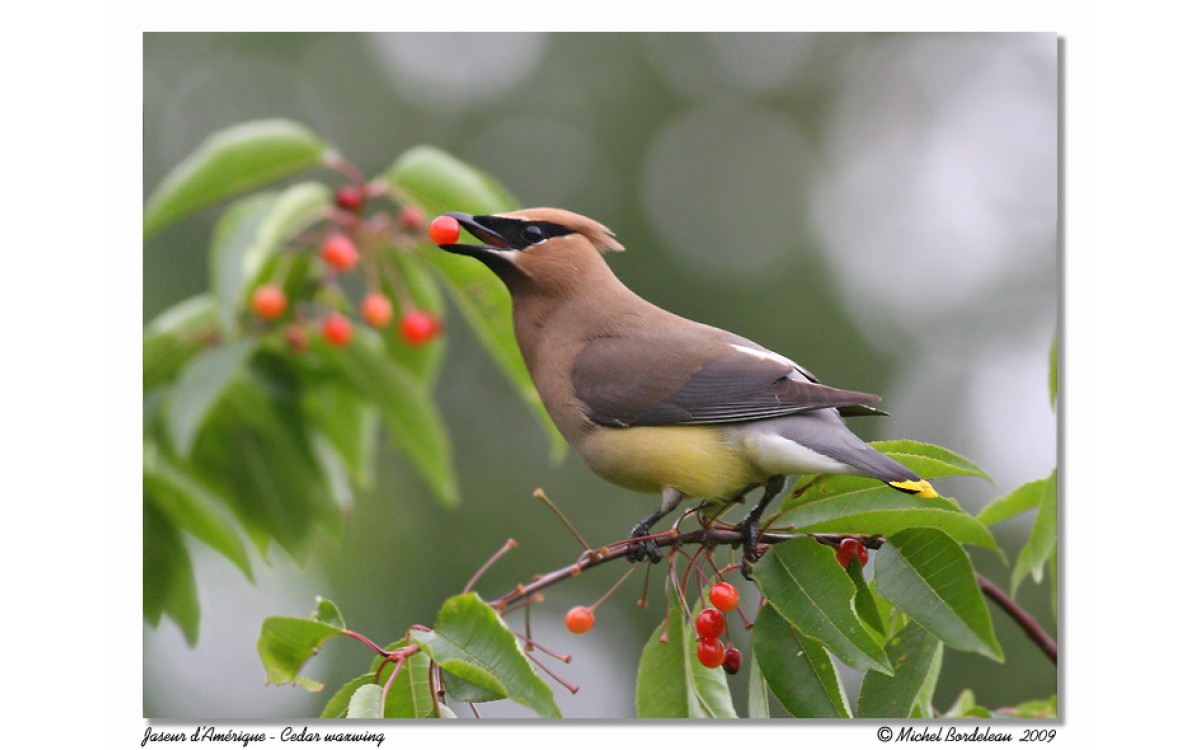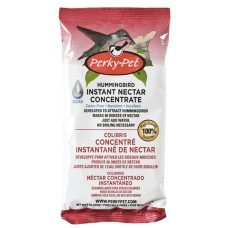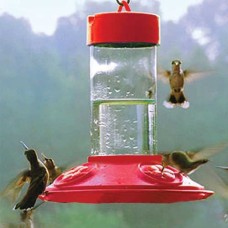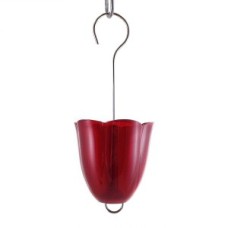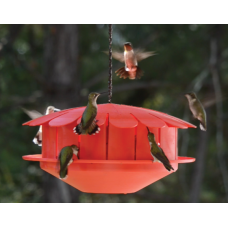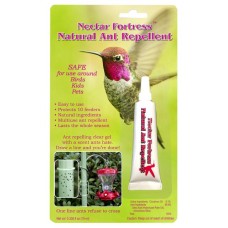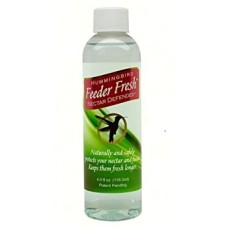The Ruby-throated Hummingbird is a truly remarkable bird, known for its tiny size, lightweight body, and incredibly fast wingbeats.
It’s often referred to as a “hummingbird” because of the buzzing sound its wings produce during flight.
Where to Spot Them
In Quebec and the Maritime provinces, the Ruby-throated Hummingbird can be observed from late April through late September or early October. To avoid the harsh Canadian winter, it migrates south to Mexico and Central America for the cold season.
Morphology and Behavior
This species measures just 8 to 9 centimeters in length and weighs about three grams. Its wings beat an astonishing 70 to 80 times per second, and it’s one of the only birds that can fly backwards.
With a long beak and an extensible tongue, the hummingbird is well-equipped to reach deep into flowers to drink nectar. About 90% of its diet consists of nectar, but it also eats small insects and spiders, caught mid-air, on tree barks, leaves, or even inside spider webs. It will also seek out holes in trees made by woodpeckers to access sap and insects attracted by the sap.
On average, a hummingbird consumes half its body weight in food daily. This is due to its incredibly high metabolism and unusually large heart for its size, both of which require immense amounts of energy to sustain flight.
What to Plant to Attract Hummingbirds
Hummingbirds are highly attracted by brightly colored flowers, especially red, orange, pink, and purple, that contrast with their surroundings. They particularly favor trumpet-shaped or bell-shaped blooms.
Here are some great choices to plant in your garden:
- Heuchera Sanguinea – Perennial with small bell-shaped flowers in red, orange, or pink.
- Garden Phlox – Perennial with clusters of flowers in white, blue, pink, red, orange, or bicolor.
- Nasturtium – Annual with bright red, orange, or yellow flowers.
- Fuchsia – Shrub with pendulous, bicolored flowers in purple, pink, and white tones.
- Geranium (Cranesbill) – Hardy perennial with lilac-pink or mauve-pink flowers and a white center.
- Morning Glories – Climbing perennial with trumpet-shaped flowers in pink, lilac, purple, or blue.
Hummingbirds: Natural Pollinators
As hummingbirds feed, their heads come into contact with the flower’s pollen, which is then transferred to other flowers of the same species, making them excellent natural pollinators.
Make Your Own Nectar
To help hummingbirds thrive in your yard, you can offer homemade nectar in a hummingbird feeder.
Standard nectar recipe: Mix 1 cup of white sugar with 4 cups of boiling water. Stir until dissolved and let cool.
Migration season recipe (September-October): Mix 1 cup of white sugar with 3 cups of boiling water.
The higher sugar concentration gives them extra energy for their long journey.
Important notes:
Do not add red food coloring. Studies show it’s unnecessary and potentially harmful to the birds.
Use only white granulated sugar. Never use honey, maple syrup, brown sugar, or artificial sweeteners, as these can be dangerous or even fatal to hummingbirds.
Change the nectar once a week, or every 2–3 days during hot weather.
Clean the feeder regularly using hot water and white vinegar. Avoid soap, which can leave harmful residue.
Hang the feeder in a shady spot to prevent the nectar from fermenting.
To deter ants, apply a bit of vegetable oil to the hanger wire or use an ant moat filled with water above the feeder.

